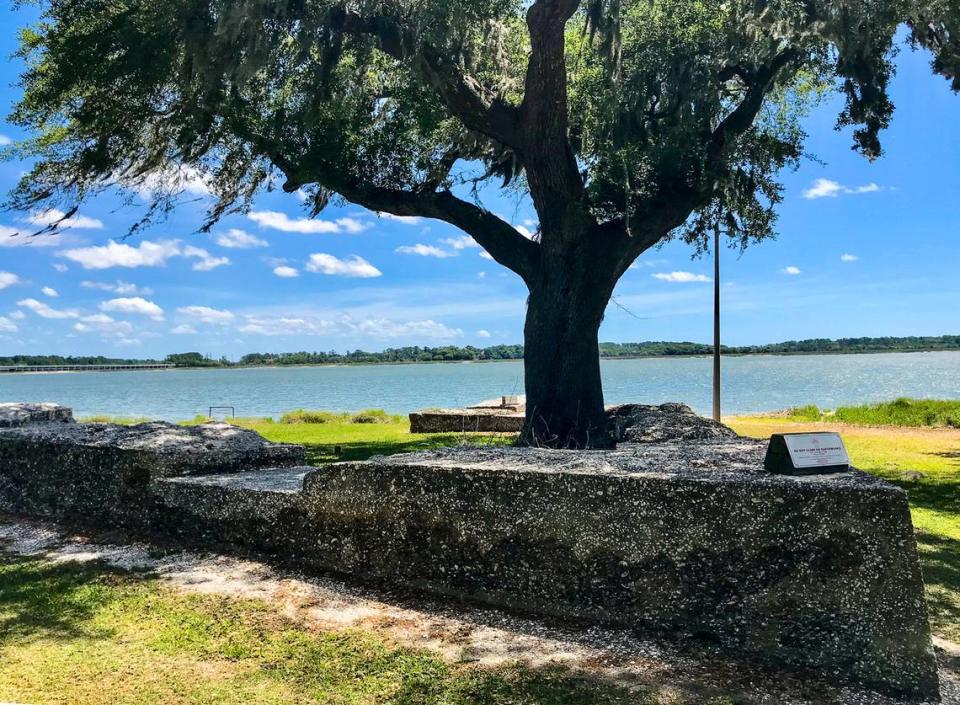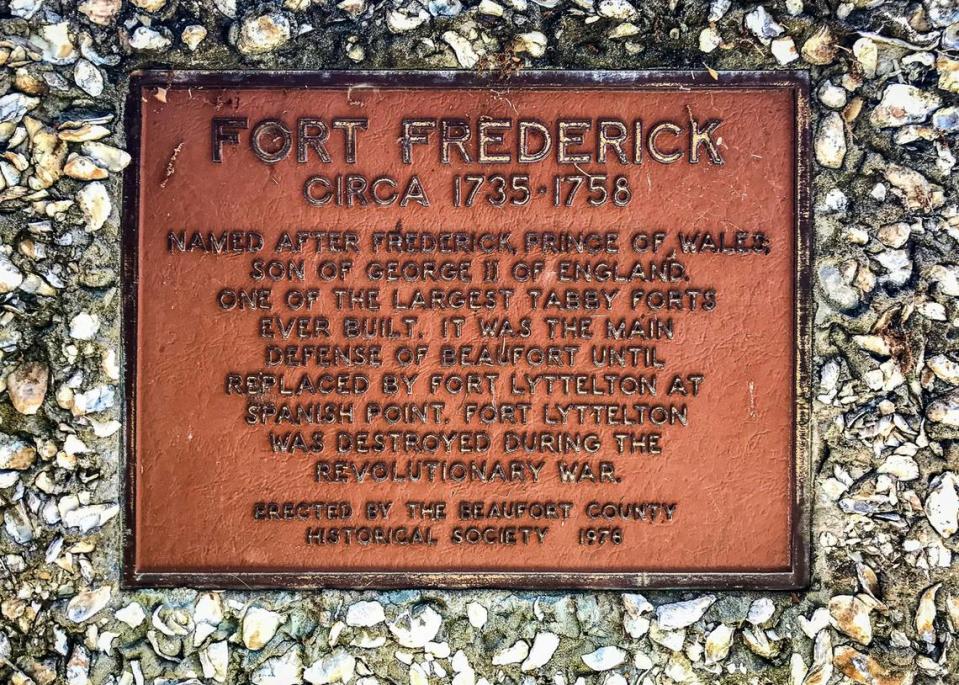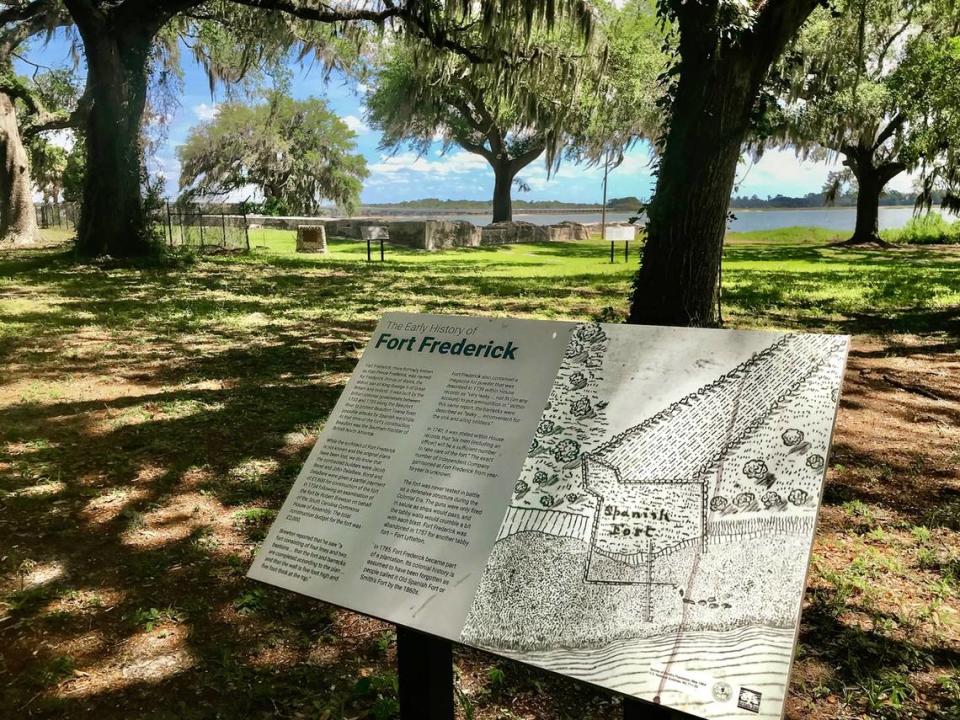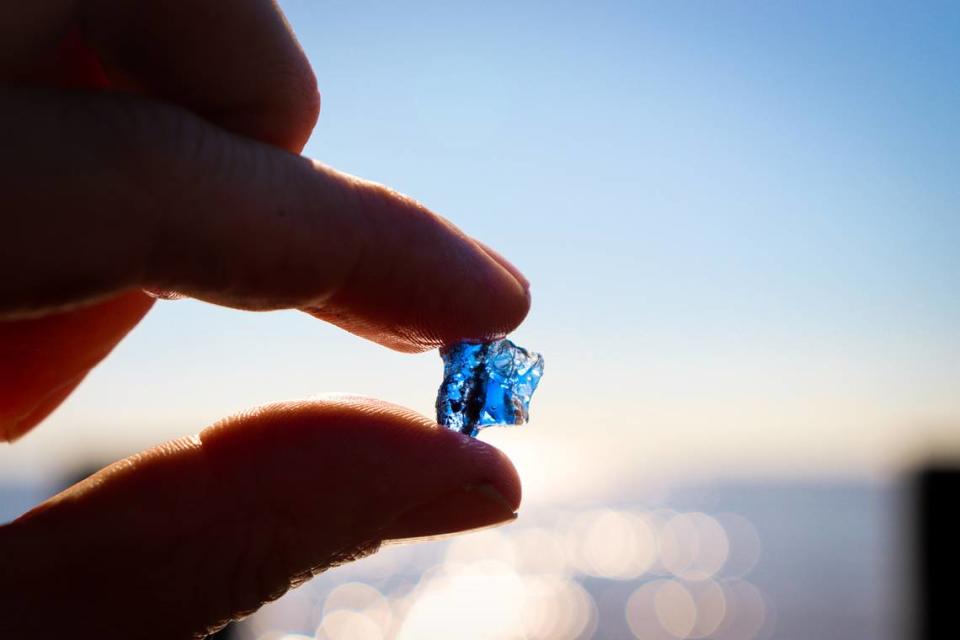Port Royal’s Fort Frederick a monument to turbulent history and a peaceful place for a picnic
It is difficult to imagine residents of the beautiful Lowcountry living under threat of war and desolation. Native Americans who inhabited the islands and forests of the region first felt it when French and then Spanish outposts came and went.
Then English settlements began to take root. These early colonists labored with a wary eye cast for war parties in the surrounding dark forests and to the horizon of the glittering Atlantic where marauding pirates or a Spanish fleet might appear.
As Europeans gained a foothold in Beaufort, the crown moved to protect its precarious holdings there.
In 1732, Fort Frederick, named in honor of Prince Frederick Louis, son of King George II of England, was constructed on the banks of the Beaufort River. Built of earth and local oyster shell, this “tabby” structure was designed to protect the citizens of Beaufort and Port Royal from threats at sea or on land.
Garrisoned with a small force of British soldiers, Fort Frederick gave the appearance of authority but was quickly rendered obsolete. It was poorly-sited, and this deficiency led to the establishment of Fort Lyttleton on nearby Spanish Point. Fort Frederick fell into disuse and was all but abandoned until a century later, when it found new purpose in a war for freedom.

In 1862, Camp Saxton was established near the crumbling walls of Fort Frederick. This encampment of occupying federal troops soon filled with African slaves who had been abandoned by fleeing owners, escaped from bondage or been freed by the Army.
Troops from Camp Saxton, including U.S. Colored Infantry, went on forays to capture the city of Jacksonville, Florida, and accompanied Harriet Tubman on her famous “Combahee Raid” to free even more people from slavery. As the camp spread out on the former plantation land between Beaufort and Port Royal, it became a place of hope.
On Jan. 1, 1863, Abraham Lincoln’s Emancipation Proclamation was read to hundreds of former slaves and freedmen beneath an oak near the walls of old Fort Frederick, once again an Army depot.

Today, Fort Frederick is a county-maintained passive park and open to visitors year-round. Fort Frederick Heritage Preserve is located off a quiet street in Port Royal adjacent to the U.S. Naval Hospital. It is included on tours by the National Park Service as part of the Reconstruction Era National Historic Park.
When you visit, you will find easy access by a short trail beneath stately live oaks that guides you past several interpretive signs explaining the history of the fort and Camp Saxton. When you view the fort, you will quickly see the shape and features as well as discover the effects of time, tide and erosion, for part of the fort has crumbled into the Beaufort River. There, along the muddy shoreline, glimpses of the past can be seen in the form of colorful bits of glass and other tiny debris left from hundreds of years of human activity.
Fort Frederick Heritage Preserve is a nice place to visit for a picnic lunch, a coffee break during work hours, or to get a breath of fresh Lowcountry air. The once-threatening horizon now features happy boaters, and the primeval forest has given way to cozy homes and bustling city life.
Perhaps if you listen closely to the sea breeze through the trees, you can still hear the sounds of freedom from long ago now echoed in the jet engines of Marine Corps aircraft above.

Getting there
Fort Frederick Heritage Preserve is located at 601 Old Fort Road in Port Royal. It is open to visitors year-round daily from dawn to dusk. There are no facilities at the preserve, but there is ample parking, and visitors can enjoy lunch under a covered pavilion. Fort Frederick is the oldest surviving tabby fort in South Carolina and the oldest tabby structure in Beaufort County. Collection of historical artifacts and damaging the walls is forbidden, but as a passive park you have free-reign of the grounds to explore. For information or to plan a visit call (843) 255-2152 and visit www.beaufortsc.org/listing/fort-frederick-heritage-reserve/254 to discover more. For tours by the National Park Service, go to www.nps.gov/reer/planyourvisit/camp-saxton.htm.


